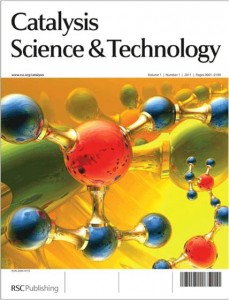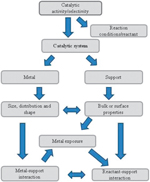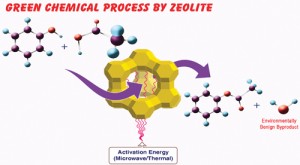 What a year Catalysis Science & Technology has had, Volume 1 contains no less than 9 Issues and 1696 pages! It has been a fantastic launch for the journal as we see our first Christmas since publishing Issue 1 in April and things are looking very bright for 2012. We saw our first themed issue ‘Heterogeneous catalysis for fine chemicals’ with Guest Editors Mario Pagliaro and Graham Hutchings and we have blogged about 47 ‘Hot Articles’ throughout the year.
What a year Catalysis Science & Technology has had, Volume 1 contains no less than 9 Issues and 1696 pages! It has been a fantastic launch for the journal as we see our first Christmas since publishing Issue 1 in April and things are looking very bright for 2012. We saw our first themed issue ‘Heterogeneous catalysis for fine chemicals’ with Guest Editors Mario Pagliaro and Graham Hutchings and we have blogged about 47 ‘Hot Articles’ throughout the year.
We have published original research papers, communications, Minireviews and Perspectives across the breadth of the field, including homogeneous catalysis, heterogeneous catalysis, biocatalysis and catalysis in technology. It is the season of festivities which can occasionally lead to over-indulgence, so remember, if you need to take an afternoon off to relax and digest, all articles in Catalysis Science & Technology are free to access for the duration of 2011 and 2012!
You can also browse the Catalysis Science & Technology blog and facebook page or keep up to date with events real time by following us on twitter or signing up to e-alerts
Here is just a small selection of review articles that may be of interest over the holidays:
Nanokinetics for nanocatalysis
Dmitry Yu. Murzin
Catal. Sci. Technol., 2011, 1, 380-384
DOI: 10.1039/C0CY00084A, Minireview
Asymmetric catalysis using iron complexes – ‘Ruthenium Lite’?
Muftah Darwish and Martin Wills
Catal. Sci. Technol., 2012, Advance Article
DOI: 10.1039/C1CY00390A, Perspective
Metal–organic frameworks as heterogeneous catalysts for oxidation reactions
Amarajothi Dhakshinamoorthy, Mercedes Alvaro and Hermenegildo Garcia
Catal. Sci. Technol., 2011, 1, 856-867
DOI: 10.1039/C1CY00068C, Perspective
Design strategies for engineering selectivity in bio-inspired heterogeneous catalysts
David J. Xuereb and Robert Raja
Catal. Sci. Technol., 2011, 1, 517-534
DOI: 10.1039/C0CY00088D, Perspective
Recent progress in the electrochemical conversion and utilization of CO2
Neil S. Spinner, Jose A. Vega and William E. Mustain
Catal. Sci. Technol., 2012, 2, 19-28
DOI: 10.1039/C1CY00314C, Perspective
An introduction to X-ray absorption spectroscopy and its in situ application to organometallic compounds and homogeneous catalysts
Ryan C. Nelson and Jeffrey T. Miller
Catal. Sci. Technol., 2012, Advance Article
DOI: 10.1039/C2CY00343K, Perspective
Organometallic hydrogen transfer and dehydrogenation catalysts for the conversion of bio-renewable alcohols
Andrew C. Marr
Catal. Sci. Technol., 2011, Advance Article
DOI: 10.1039/C1CY00338K, Perspective
Happy Christmas from the Catalysis Science & Technology team!





















